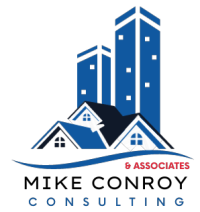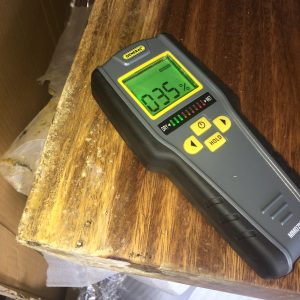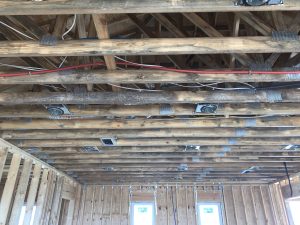Consultant's Perspective on Damage Restoration
Insights from Storm Damages
As an Indoor Environmental Consultant specializing in the management and remediation of buildings affected by weather-related incidents, I provide an informed continuation of the IICRC’s Storm Damage Restoration Recommendations. Understanding the unique challenges presented by such damage, I advocate for an approach that prioritizes indoor environmental quality and occupant health.
Following the onslaught of storms in areas like Pensacola, Gulf Breeze, and Milton in Florida, as well as Mobile, Gulf Shores, and Orange Beach in Alabama between 2004 and 2005, there emerged an urgent need for water damage restoration experts. It became clear to our consultancy group, taking note from the observations of Insider Investigation, that the current capacity was insufficient to meet the pressing demand of the thousands affected by the hurricanes.
We engaged with an industry expert, the technical director of the IICRC, to outline best practices for home and business owners confronting water damages. As a result, the IICRC crafted the following guidelines, which we have summarized and provided perspective on for our clientele.
Liability Notice: The subsequent advice is given as a public initiative by the IICRC for those affected by water-centric storm damage (like hurricanes or tornadoes). The restoration steps might vary based on specific conditions, and any actions taken based on this information come with inherent risks.
IICRC's Storm Damage Restoration Recommendations
(Consultant's Summary)
5 Considerations for Residential or Light Commercial Structures

Documentation
Regardless of insurance coverage, document all damages using photographs or videos. This can serve as a crucial piece of evidence for insurance claims or any other proceedings.

Immediate Action
Initiating loss mitigation is vital. Don’t delay this process while awaiting insurance representatives. With time, microbial growth can set in, leading to further damages that might not be insured. For clarity, “loss mitigation” pertains to measures aiming to prevent additional damage to property.

Water Categories
The IICRC differentiates water damage into three main categories:
- Category 1: Clean water, though it can get contaminated over time. E.g., burst pipes or rainwater.
- Category 2: Contaminated water that can lead to human illnesses. Contamination can worsen with time.
- Category 3: Highly contaminated water, hazardous upon consumption. E.g., sewage or floodwaters.

Water Entry Modes
Direct Entry: Caused by rainwater due to damaged roofs or walls.
Ground Surface Entry: Water, often Category 3, seeping through doors or foundation walls. In severe cases, prolonged flooding might necessitate specialized procedures.

Microbial Growth Conditions
To prevent or delay microbial growth, controlling the following conditions is paramount. Household microbes typically need:
- Organic food (like wood or paper found in construction)
- Moisture or humidity above 67% RH
Temperatures between 68-86°F (20-30°C) - Stagnant air
Several hours to days of exposure
Consultant’s Note
Restoration processes, particularly in areas prone to severe weather events, require a strategic approach. Adhering to guidelines such as those provided by the IICRC is a proactive measure, but always consider engaging with a professional consultant to ensure the best approach tailored to individual needs.
A Framework for Loss Mitigation Procedures
Prioritization of Safety and Health
Structural Integrity
It is imperative to assess the building’s structural soundness before entry, as storm impacts may compromise it. Engage a licensed builder or structural engineer for a professional evaluation if there are any concerns.
Ventilation
To minimize microbial proliferation, it is critical to ensure adequate air movement. Opening windows and maintaining ventilation during and after the restoration process, or until the areas can be isolated for mechanical dehumidification, is essential.
Electrical Safety
Eliminate electrical hazards by shutting off power to affected areas to prevent shock risks.
Personal Protective Equipment (PPE)
Utilize PPE, such as protective clothing, steel or fiberglass shank boots, hard hats, gloves, splash goggles, and organic vapor respirators, to safeguard against injury and exposure to contaminants.
Debris Management
Promptly remove debris using appropriate tools, ensuring their thorough cleaning post-use to prevent cross-contamination.
Moisture Source Identification & Mapping
Accurately locating and following the path of moisture ingress is crucial. Collaborate with water restoration professionals equipped with specialized detection tools to determine the full extent of wetting.
Selective Material Removal
Affected materials, especially when associated with overhead water entry or compromised building envelopes in warm climates, should be promptly removed to prevent microbial growth.
Flooring materials like carpets, pads, or laminated wood often need to be discarded due to saturation, although professional drying services can sometimes preserve them.
In floodwater scenarios, remove wall materials up to a safe margin above the waterline and dispose of all wet insulation to prevent moisture wicking.
Drying of Category 1 Water Incidents
mplement drying strategies to thwart microbial activity. Engage a professional water damage restoration company, if accessible, equipped with advanced tools and expertise.
Soil Residue Cleaning for Ground Surface Water Incidents (Category 3)
Precede any biocide application with thorough cleaning to ensure effectiveness.
Employ appropriate household cleaners, brushes, and pressure washing techniques to remove soil residues, always prioritizing top-down cleaning methods.
Disinfecting
Disinfection may be unnecessary for Category 1 water; however, for Category 2 or 3 contamination, cleaned materials should be treated with an appropriate biocide, ensuring personal protection during application.
Drying and Humidity Control
Facilitate the drying of structural components using air circulation and constant ventilation, avoiding extreme temperatures. For optimal results, use professional-grade airmovers and dehumidifiers.
Moisture Monitoring Post-Cleaning
Allow structural surfaces to dry completely, ascertaining their moisture content approaches normal levels before reconstruction to prevent future damage or health risks.
Restoration and Reconstruction
Where resources permit, enlist certified IICRC Damage Restoration Technicians for comprehensive restoration. Before rebuilding, have a professional evaluate the moisture content of structural components.
For further details on these guidelines, refer to the original content here. As an Indoor Environmental Consultant, I underscore the importance of a meticulous and health-conscious approach to storm damage restoration to ensure the long-term safety and well-being of building occupants.
Discover more
- All
- Air Quality
- Mold Remediation
- Podcasts










